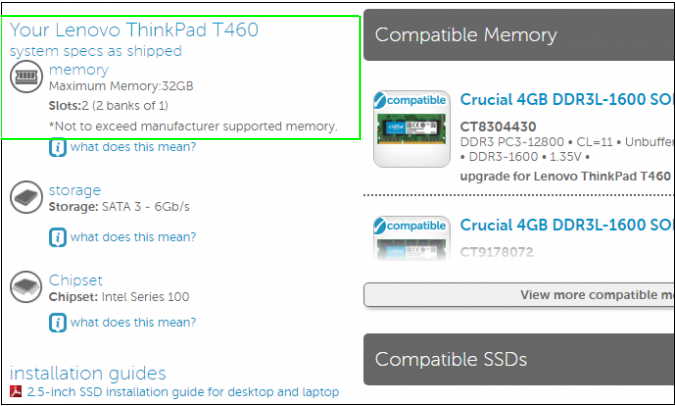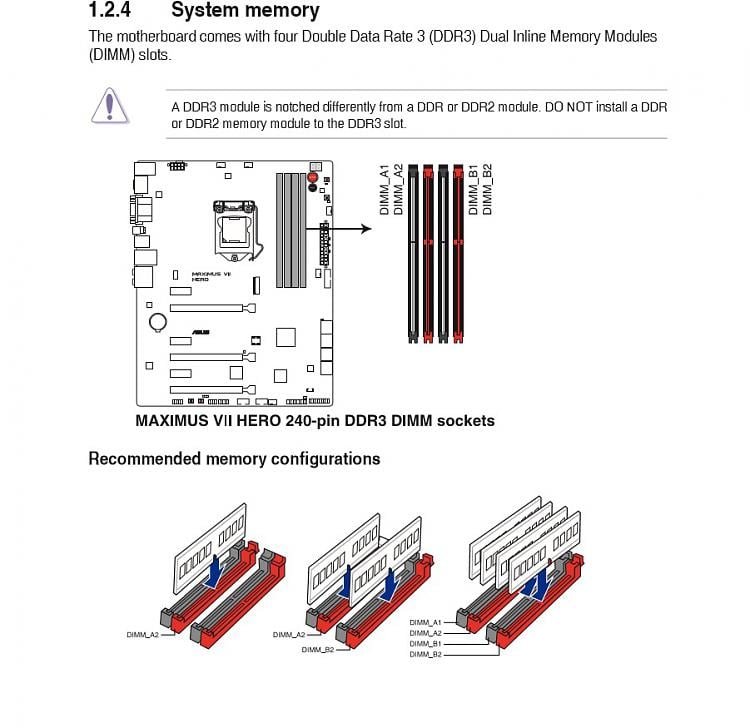
Slots
This is the total number of memory upgrade slots (sockets) followed by their configuration. Banks are the way a system addresses memory. A bank must be completely filled with memory modules of the same size and type in order for the system to recognize and address the memory. i.e. :
3 (3 banks of 1) This indicates that there are 3 memory slots. These are divided into 3 banks, and each bank consists of one memory slot. So you can add memory one piece at a time for the system to use.


4 (2 banks of 2) This indicates that there are 4 memory slots. These are divided into 2 banks, and each bank consists of two memory slots. So you must add memory two pieces at a time (they must be the same size and type of memory) in order for the system to benefit from the upgrade.
(so to reiterate, RAM pairs should NOT be side by side, they should be staggered, ie slot 1 and 3 for pair 1, slot 2 and 4 for pair 2. By Stephen Suess @danj It might be helpful to others if you delete this post, as it is incorrect and with your reputation on this site, it looks like people are using your incorrect advice instead of. Jan 09, 2015 wmic MEMORYCHIP get BankLabel,DeviceLocator,Capacity,Tag BankLabel Capacity DeviceLocator Tag BANK 0 Bottom - Slot 1 (top) Physical Memory 0 BANK 1 Bottom - Slot 2 (under) Physical Memory 1.

Slots 2 2 Banks Of 1 Meaning Dictionary
12 (3 banks of 4) This indicates that there are 12 memory slots. These are divided into 3 banks, and each bank consists of four memory slots. So you must add memory four pieces at a time (and they must be the same size and type of memory) in order for the system to benefit from the upgrade.